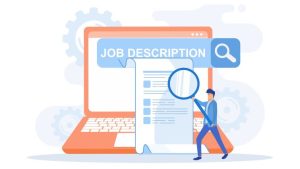5 Steps to Enhance Your Employee Experience Roadmap
 Publié le 24 April 2024
Publié le 24 April 2024
Help ensure that your workforce is engaged and satisfied at all career stages with 5 steps to enhance your employee experience roadmap.
How happy are your employees? Overall, job satisfaction in the US is fairly high, sitting at 62.3% in 2022. However, that doesn’t mean everything is a-ok when it comes to workplace satisfaction and engagement. Women still remain generally less satisfied than their male counterparts and that overall figure still means that more than a third of workers are not satisfied.
Despite diversity policies and laws, with some 41% of POC have faced some form of discrimination in the workplace, both from their employers and from fellow workers. Achieving, and maintaining, good levels of employee satisfaction is essential and a good employee experience roadmap can help you do that. But what is an employee experience roadmap and how can you use it to improve satisfaction levels?
What is an employee experience roadmap?
Image sourced from Enterprise Apps Today
An employee roadmap will cover all aspects of how your employees view their job role, their managers and the organization as a whole. It should cover every touchpoint they encounter, from the initial recruitment process to their choosing to leave their role (if they have). It is very much an emotional thing as it charts how the different touchpoints and experiences have made them feel at all points in their employment journey.
There can be great variation within the roadmap that can help organizations see what works and what doesn’t. An employee may have had a fantastic experience during recruitment and onboarding but may have been disappointed later by a lack of learning opportunities. Of course, you want to use employee experience roadmaps to look closer at what is providing positive experiences and what the pain points are.
The stages to include in an employee experience roadmap
- Attraction
As with customers, new hires need to be aware of your business. They may already know about your reputation, they may even have read positive reviews from past or current employees. For your roadmap, attraction begins with your job adverts and the application process, which includes well-written resumes from applicants. Ensure your process is consistent and not overly complicated.
- Recruitment
Image sourced Smart Recruiters
Your actual recruitment process may be long or short depending on the role and the number of applicants. It can involve phone, video call, and in-person job interviews and may even include some aptitude tests. The important thing in this step is to maintain openness and good communication.
- Onboarding
This is one of the most important steps in the employee journey. You want to be sure that the new hire receives any and all training they need to do their job proficiently but you also want to introduce them to your company culture. As there can be many different facets to onboarding, collecting and analyzing feedback can help you make future onboarding better.
Onboarding, especially in the era of remote work, plays a crucial role in integrating new hires into your company and providing them with the necessary tools and training to excel in their roles. Whether it’s through virtual training sessions or comprehensive online resources, effective remote onboarding ensures that employees feel supported and engaged from day one.
Moreover, fostering regular communication channels and utilizing digital collaboration tools can further enhance the onboarding experience for remote employees, facilitating smoother integration and alignment with organizational goals. Remote workers engage in deeper work when provided with adequate support and resources, contributing to increased productivity and job satisfaction.
- Employee retention
With the average turnover rate in the US being 17.3%, staff retention should be a primary focus. When staff leave, for whatever reason, they need to be replaced with qualified people, and that comes with high recruitment costs. Several factors can ensure you have good retention rates, including competitive salaries, good benefits packages, as well as things such as a good work-life balance.
- Career progression
You want your employees to be able to develop new skills and progress in their careers. You may decide to introduce new technology such as a voice calling app, which will involve training, or you may spot leadership qualities in an employee and decide to give them further training in that area. Giving career opportunities can mean your staff will be highly engaged which can help improve productivity and efficiency.
- The end
All good things come to an end and people leave your employ. While some of this may be due to natural turnover from retirement or relocation, it can also be due to factors such as job/employer dissatisfaction. Exit interviews are a great way of gaining insights into not only why the person is leaving, but also their thoughts on you as an employer.
Create the perfect employee experience roadmap
Image sourced from HR Clean Co
You may already be using employee experience roadmaps but are they as good as they could be? It’s not always about going back to the drawing board but about auditing your current roadmap template and seeing where you can improve it. Look at the following steps and see how they compare with what you are currently doing.
- Where are you now?
Where does your current employee experience roadmap (if you have one) start? A good starting point is to audit the overall employee experience within your business. Consider using the following factors which can act as roadmap foundations. You need to think about every aspect of employee experience, from remuneration to opportunities to upskill.
- Exit interviews. If you’re not already using these, you should. They can be a great source of information, especially when you consider that people will usually be honest in them.
- Employee surveys. Anonymous surveys can be the perfect way of auditing the current employee satisfaction levels. Because of the anonymity, people will be honest, sometimes brutally so. But they can give you a realistic overview of both positive and negative factors.
- Retention rates. Your HR team contributes a lot to your business strategy and will be able to tell you what your current (and historical) rates are. Compare them to other businesses in your sector to see if you are over or underperforming.
- Define your goals
Once you know where you are now, you can decide where you want to be. You may use that 62.3% satisfaction level as a benchmark and decide you want to be the same if not better. It’s also about identifying ‘weak links’ in the chain and coming up with plans to improve those links. For example, a business that uses a lot of cutting-edge technology may identify application portfolio management as making things easier for its staff.
In real life, a map is of no use unless you know where you want to get to. Your roadmap should look to consider both organizational goals and ways of improving the employee experience.
Integrating tools such as a DMARC checker tool can enhance email security and reliability, contributing to a smoother communication process and ultimately improving the overall employee experience.
- Decide on metrics
If you’re changing things, how will you measure progress and/or success? Once you have clearly defined goals, you need to choose some KPIs so that you can track any changes.
- Recruitment rates. If you are receiving high numbers of applications, that could reflect a positive external perception. Of course, the opposite may be true as well.
- eNPS (employee net promoter score). This metric demonstrates both loyalty and engagement and can be a good way of measuring employee sentiment.
- Retention rates. If your rate goes up, then you’re doing something right. But if it goes down, then you need to look at what is going wrong.
- External reviews. While not perfect, external sites such as Glassdoor show what past and current employees are saying about you as an employer. You may also want to use social monitoring apps to see what employees say about you on social media.
- Profits and productivity. If these go up, then it shows that your workforce is engaged with you as an employer. Improvements to these metrics may reflect higher employee satisfaction rates.
Additionally, consider adhering to the relevant ISO standard to ensure a comprehensive evaluation of your employee experience.
- Plan or improve your roadmap
Free to use image sourced from Pixabay
If you have an existing employee experience roadmap, look at how you achieve different parts of it. You need to work within your capabilities and have ways of moving the plan forward.
- All aboard! You need everyone on board and moving in the same direction. You need to think about what – if any – training is needed, as well as meetings to communicate your ideas and plans.
- Employee focused. These roadmaps are about your employees so ensure every part of your plan focuses on them. That can mean listening to them and identifying any reasons for dissatisfaction or anything they think could be improved.
- Technology. When you build an enterprise transformation roadmap, one of the things you consider is technology and it’s no different with your employee roadmap. What part will technology play in helping you to achieve your organizational goals and also meet employee needs?
- Priorities. There’s a good chance you will be looking at multiple touchpoints (or pain points) in the employee journey. When you do have many factors that need improving, you need to prioritize the important ones and make an action plan.
- Be realistic. Don’t run before you can walk. Make your goals realistic and achievable. While you might love to see 90%+ satisfaction rates, that is unlikely to happen.
5. Measure, analyze, and tweak
A new roadmap isn’t going to be perfect and neither may be your existing one. Just as enterprise architects business outcomes can dictate future decisions, so should your current roadmap dictate future direction. Track the metrics you have decided on, collect feedback from employees, and analyze the data you have collected.
You may not have to redraw the entire map, but careful consideration of the data can help you spot areas that are not working as well as they could. Don’t be afraid of admitting you got something wrong, it’s all part of the process and can lead to better roadmaps and higher employee satisfaction.
The takeaway
Free to use image sourced from Pixabay
Keeping your employees happy is as important as keeping your customers happy. It’s not just a case of offering good salary packages, though that does help, but of looking at every aspect of the employee journey with your organization. A robust employee experience roadmap can help you identify any pain points and make changes to improve satisfaction levels.
You likely listen to your customers so listen to your workforce too. If you have an existing roadmap, is it achieving the goals you identified? If not, or if you are starting from scratch, then including the 5 steps to enhance your employee experience roadmap can be a signpost to success.







